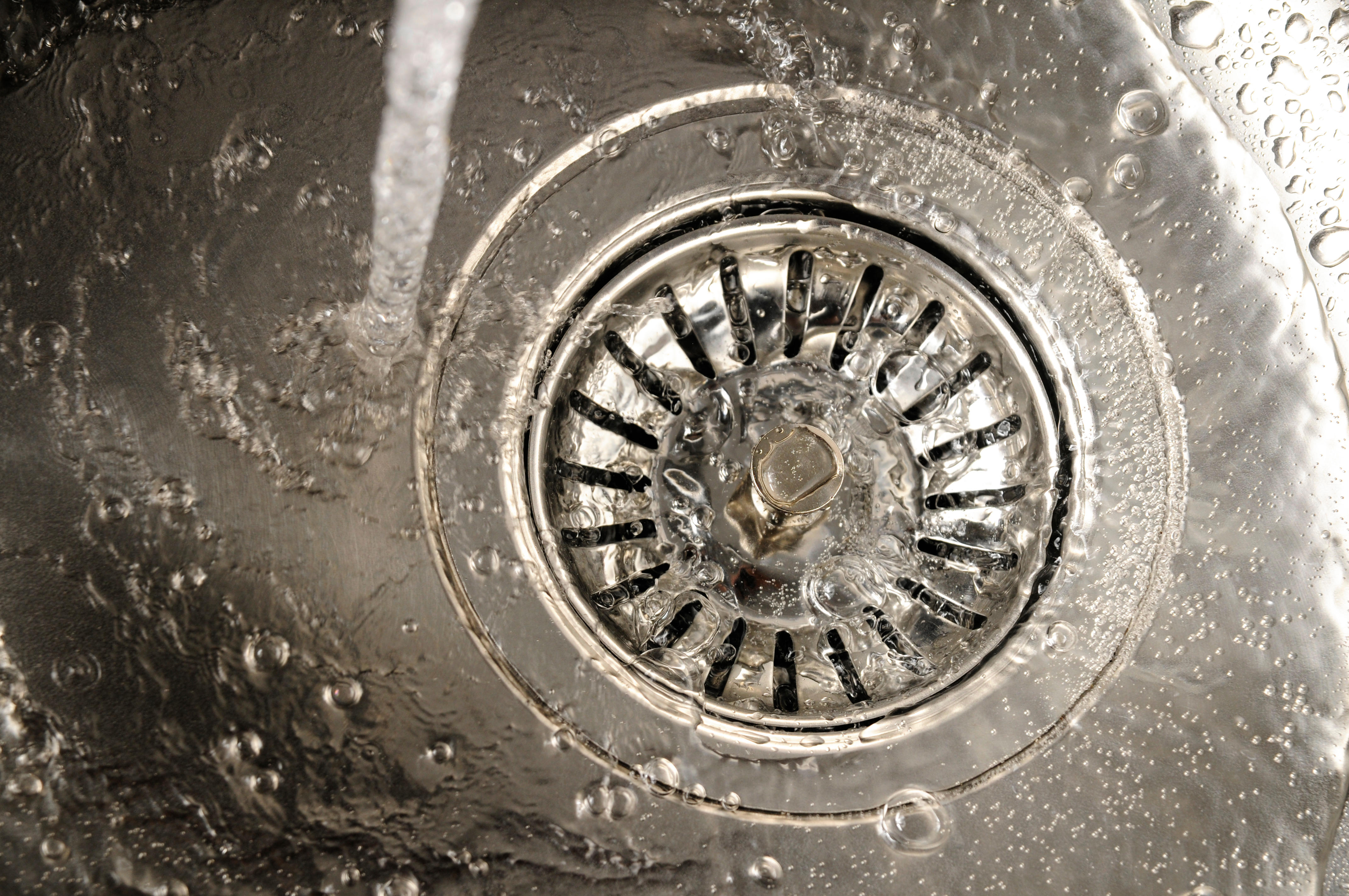How to change a kitchen sink drain – in four easy steps
It might be time to change your kitchen sink drain if water is emptying slowly, or not at all. Here’s how to tackle this DIY task yourself


Every now and then a kitchen sink drain will need changing. Most plumbing components will need replacing at some point, and if your kitchen sink isn’t draining as well as it should, it might be that it’s old and worn out. And if you’re constantly having to repair it or use a plunger, now is the time to think about changing the kitchen sink drain for smooth, easy water drainage every time.
Before you replace a kitchen sink drain, though, do check that it isn't just a case of fixing a clogged sink. ‘The biggest causes of kitchen sink clogs are grease and food,’ says Martha Stewart. ‘That's why it's so important to scrape any crumbs off your plate and into the trash before giving it a good rinse.’
Check your sink area regularly and look for signs of wear and tear. If yours is old and outdated, the drain probably is too.
‘Replacing the kitchen sink drain isn’t too time-consuming,’ says Lucy Searle, Global Editor in Chief for Homes & Gardens. ‘It should take around one or two hours from start to finish and it’s a job that even novice DIY-ers can tackle. The time to change it is if it’s not draining water properly and is tricky to fix or if you are replacing a kitchen sink as part of a kitchen renovation or update.’
How to change a kitchen sink drain
Kitchen sink drain traps can be purchased as kits with parts to match your current configuration. So, think about whether you need a drain trap for a single or double-bowl sink or one with a garbage disposal.
There is also a choice of materials too with PVC plastic (the most common option), chrome and copper. Because the kitchen sink drain is hidden from view inside the kitchen sink cabinet underneath, most people opt for the plastic version.
You’ll also need to check the size. Most kitchen sink drains are 1.5 inches in diameter whereas bathroom sinks will be 1.25 inches. Try to choose a kit with smooth pipes rather than corrugated, as corrugated can catch grease and food as it goes down the drain, causing constant clogs.
You will need:
- Kitchen drain trap kit
- Sink drain and strainer assembly
- Tape measure
- Marker
- PVC tubing cutter or hacksaw
- Channel locks/pliers
1. Check the height of the trap arm
Allow yourself a couple of hours of uninterrupted work time and get all your tools ready. Clear the area under the sink so you have room to work in and place a bucket underneath the pipework. First, look at the height of the trap arm under the current sink. You’ll locate this by looking at the U shaped bend (also known as the P-trap) and the drainpipe that leads into the wall. There’s a trap arm in between, which is a horizontal piece of pipework. Note when we say 'horizontal' that there is a slight slope from the P-trap side to the wall outlet/branch drain to allow for proper draining – ideally, the slope should be around 0.25inches per foot.
Take your tape measure and measure from the floor or the bottom of the cabinet to the middle of the trap arm. This is the length you need for the new pipe.
The new sink's depth needs to match your current sink's depth so that the trap arm doesn't have to be moved. If the new sink differs from your current one in depth (particularly if it is deeper), that you ensure it can allow for the proper trap arm slope. If it can't, you will need to move the drain outlet in the wall, which makes the job much more complicated (see below).
2. Lower the position of the drain outlet
As we said above, if the new sink is deeper than your current one, you will very likely have to lower the drain outlet. This is not a job for a beginner to DIY – or someone without the proper tools: you will need to both cut away more of the back of the kitchen cabinet and through the brick or masonry of the external house wall.
If you are determined to do this yourself rather than call in a professional, be sure to measure carefully to check whether the lowered P-trap can still be removed for cleaning and unclogging in future.
3. Cut and connect the drain pipes
Whether you’ve bought a pre-cut length of pipe to the measurements needed or you cut a longer length to fit using a small hacksaw or tubing cutter, precision is key. You’re basically replacing like for like here so take photos as you go, as this will help.
You need to remove existing parts and install the drain trap and waste pipe using slip nuts and washers. Tighten by hand for now, making sure the continuous waste arm slopes slightly downwards. Once you’re happy, tighten with Channel locks.
4. Check for any leaks
Turn the faucet on and check for leaks at every pipe joint. Tighten up any connections where needed then finally, fill the sink with the plug in then remove the plug and let the sink drain away – always with a bucket underneath until you’re satisfied.
Do I need plumber's putty to change a kitchen sink drain?
If you do need to stop any leaks, plumber's putty (available at Amazon) is the perfect product. It’s a sealing staple used by professionals, DIY-ers and homeowners alike.
How do I remove a sink strainer?
To remove a sink strainer, use 16 inch slip-joint pliers or a spud wrench to unscrew the existing strainer locknut. If the basket spins, insert the plier handles into the strainer grate from above and stick a screwdriver between the handles to hold it still.
Sign up to the Homes & Gardens newsletter
Design expertise in your inbox – from inspiring decorating ideas and beautiful celebrity homes to practical gardening advice and shopping round-ups.

Hayley is an interiors journalist, content provider and copywriter with 26 years experience who has contributed to a wide range of consumer magazines, trade titles, newspapers, blogs and online content. Specialising in kitchens and bathrooms, she has twice won the CEDIA Award for Best Technology feature. Hayley writes for H&G about kitchens, bathrooms, cleaning, DIY and organizing.
-
 April is the ideal time to prune beautyberry shrubs – for a stunning display of vibrant berries this fall
April is the ideal time to prune beautyberry shrubs – for a stunning display of vibrant berries this fallWhether you choose to trim gently or hard prune, cutting back in spring promotes healthy and productive growth
By Drew Swainston
-
 This kitchen has been transformed from cramped and outdated to warm and welcoming – and it's all thanks to a few thoughtful Japandi-style features
This kitchen has been transformed from cramped and outdated to warm and welcoming – and it's all thanks to a few thoughtful Japandi-style featuresWarm wood tones, textural designs, and considered contrast are key to this beautiful transformation
By Molly Malsom